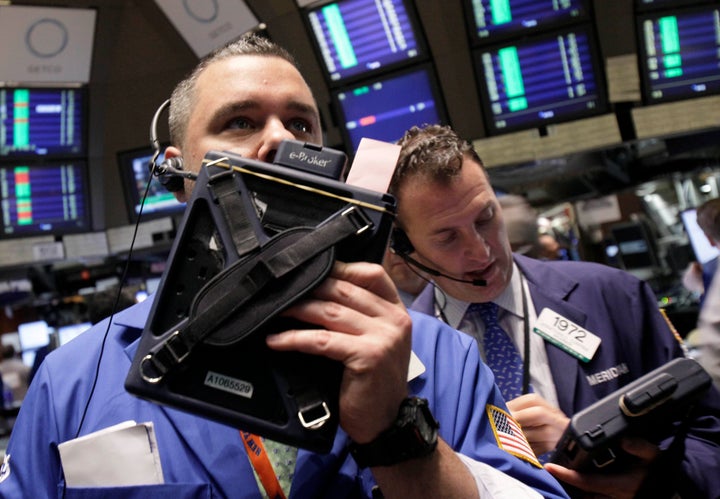
As lawmakers in Washington delay authorizing additional public debt, investors are treating the prospect of a U.S. government default -- while still highly unlikely -- as growing in probability.
Even as traditional market indicators suggest the government's debt is as secure as ever, bets that the Treasury will default are becoming more popular. And foreign investors seem to be displaying skittishness about their holdings of Treasury debt. With Congress showing little progress on a deal to raise the debt ceiling, some economists say the possibility of a default by the Treasury, once unimaginable, has now become a factor in investment decisions.
"It's still extremely unlikely, but it is now something that can be talked about. That moves us into a different world," said Mark Vitner, a senior economist at Wells Fargo. "It was unthinkable not too long ago."
In the last couple months, investors have piled into bets that the Treasury will default. The cost of holding one-year credit default swaps on U.S. debt -- insurance that pays out if the government misses a debt payment -- has skyrocketed, more than tripling since the beginning of April, the Wall Street Journal reported this week.
Investors have been buying so much insurance on U.S. debt that the gross value of these derivatives is now twice what it was at this time last year, the Financial Times reported Thursday. Investors own $24 billion of these contracts as of last week, compared to last year's $12 billion, the FT noted.
"It's become a little more of a two-way market," said John Richards, head of North American strategy at Royal Bank of Scotland. "People are willing to play around a little bit more."
Nervousness apparently isn't limited to derivatives investors. Treasury securities held in custody at the Federal Reserve for foreign accounts this week experienced their biggest drop in four years, Zero Hedge noted Thursday. While the precise meaning of the drop isn't clear, it could suggest foreign powers are scaling back investment in the U.S. government.
"There's still a lot of uncertainty going around," said Gregory Daco, senior economist at IHS Global Insight. "The general view is that the government will manage to find a consensus to raise the debt ceiling, but there are always going to be some jitters in the market due to this uncertainty."
The federal government hit its debt ceiling this month, as the Treasury initiated a series of programs designed to keep the public debt below the limit and temporarily preserve the government's ability to borrow. But the Treasury can't tread water in this way forever, and come August 2, it could be forced to miss payments to creditors, Treasury Secretary Tim Geithner wrote in a letter to Congress.
Top economic officials in the Obama administration and independent economists have repeatedly warned that a default could spread panic through credit markets worldwide, causing interest rates to rise and even setting off another financial crisis.
But lawmakers have delayed raising the limit. Republicans have said they will not vote to increase it unless the legislation is tied to measures intended to reduce the federal deficit. This seeming game of chicken, in which lawmakers threaten to push the government toward default just to win political concessions, has provoked consternation among government officials.
"It's a dangerous precedent," economist Jared Bernstein told The Huffington Post. Until he left the government for a think tank two weeks ago, Bernstein was Vice President Joe Biden's chief economist.
"What purpose is served by even entertaining the possibility of a default?" he added.
But if some investors are skittish, that isn't reflected in the Treasury bond data. Even as the popularity of one-year credit default swaps has been rising, yields on 10-year Treasury securities have been falling, suggesting this debt is perceived as a solid investment.
As of Thursday's close, the yield on 10-year Treasuries was less than 3.1 percent, compared to nearly 3.6 percent at the April peak and over 3.7 percent at the February peak, data from Bloomberg show. In general, Treasury yields have been falling this year, as the value of those investments has risen.
Economists emphasized that Treasury data is a better indicator of the probability of default than credit default swap data. The volume of activity in the CDS market for U.S. debt, for instance, is far less than in Treasury bond markets.
"I don't think this reflects widespread anxiety about the ability of the U.S. government to pay its debt," said Gus Faucher, director of macroeconomics at Moody's Analytics. "If it gets to another month or so and we haven't seen any progress, that's another issue."